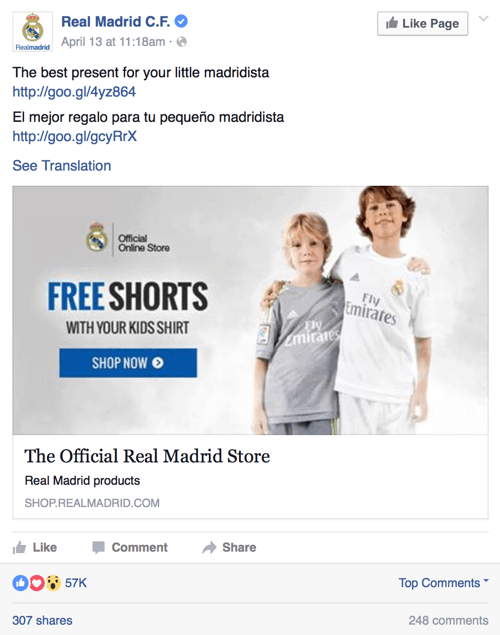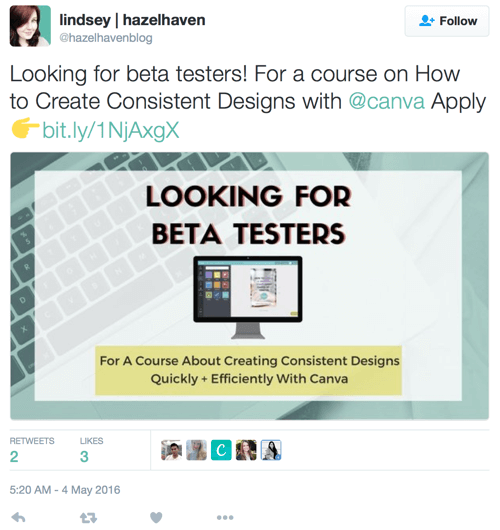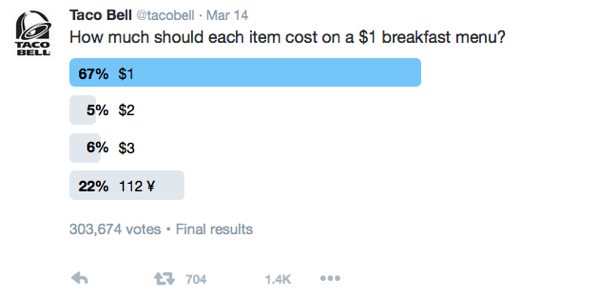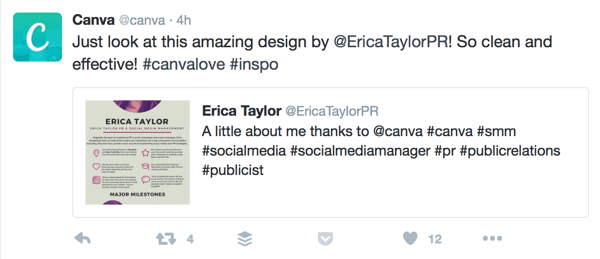 Looking for ways to connect with fans on a deeper level?
Looking for ways to connect with fans on a deeper level?
Have you thought about using psychology in your marketing?
Implementing basic psychological marketing principles in your social media activities can help you attract, engage, and form emotional bonds with your target audience.
In this article, you'll discover three ways to use psychology in your social media marketing.

Listen to this article:
Where to subscribe: Apple Podcasts | Spotify | YouTube Music | YouTube | Amazon Music | RSS
#1: Give Gifts to Encourage Responses
If you give people something they find valuable, they'll typically feel indebted to you. To incorporate this neuromarketing tactic in your social media marketing, you can offer a small gift like a discount, free trial, or free resource guide to your fans. Whatever you decide to offer, the goal is to answer the question: “What's in it for me?”
On their Facebook page, Spanish soccer club Real Madrid recently offered free shorts with the purchase of a kid's shirt from the team's official store. In just an hour, the post received over 16,000 reactions and 63 shares.

Although Real Madrid's massive Facebook following played a role in the success of their offer, this tactic can help drive engagement for businesses of all sizes. If you don't have the luxury of spending money on giveaways, you can drive engagement using free gifts.
Anytime Fitness offered their Facebook followers a free downloadable calendar to plan their activity in and out of the gym and track progress toward their fitness goals.

To use the reciprocity tactic on your social channels, take a closer look at your audience to better understand what they like and expect. Figure out what compels them to engage and come up with an offer that they're likely to share with friends.
Offer something that's valuable to your audience while ensuring that they give you something in return. For example, give a 5% discount or a free trial of your product to anyone who shares and comments on your post. Or host a giveaway contest in which followers with the most shares and social media engagement receive a free product.
In the tweet below, users are offered a free design course in exchange for being a beta tester and providing feedback on the course. Users can reciprocate by clicking on the link to apply. They might also want to share the good news with their Twitter followers, which is a form of engagement.

The idea behind the reciprocity tactic is to compel the action of engaging with your brand by making people feel obligated to you. While you can't offer a giveaway every day, you can always post useful, shareworthy information related to your business. For example, if you're in the fitness industry, share articles and tips about exercise and healthy eating.
#2: Use Emotional Triggers to Create Authentic Connections
Connecting with your audience is one of the most basic ways to increase your social media engagement. This neuromarketing tactic makes use of the emotional reaction that's triggered when people feel connected to you. When people feel close to you and can relate to you, there's a great chance they'll engage with your company.
To form an emotional connection, you need to start interacting with followers in a meaningful way.
Get World-Class Marketing Training — All Year Long!
Are you facing doubt, uncertainty, or overwhelm? The Social Media Marketing Society can help.
Each month, you’ll receive training from trusted marketing experts, covering everything from AI to organic social marketing. When you join, you’ll also get immediate access to:
- A library of 100+ marketing trainings
- A community of like-minded marketers
- Monthly online community meetups
- Relevant news and trends updates
Laughter is one of the most effective tools for forming a strong emotional bond with people. Like Chipotle does here, you can use wit and humor to connect with your Twitter followers. The Mexican grill has a deep understanding of their target audience and the kind of humor they'll likely appreciate. This helps them avoid using humor that their followers might find offensive or lame.

Chipotle also posts humorous replies to tweets from their fans. Your tweets can show enthusiasm toward your products with the right mix of humor. This works well for driving social media engagement.

Here's how you can pull off this neuromarketing tactic to connect with your fans:
Study your audience to see what kind of humor they like. Remember that not everyone appreciates sarcasm or satire. You want to joke with your fans on social media without insulting them. Replay your post multiple times to ensure that it can't be perceived as offensive. If you can, run it by your team to get their opinion on the reply.
Even when you're sharing an important fact about your company, try to communicate it in a lighthearted or humorous way. In this tweet, Taco Bell highlights their $1 breakfast menu with an amusing survey question.

Brainstorm topics that your fans can relate to. Analyze your past posts and see which ones received the most engagement from your followers. If there's a topic or cause your fans are talking about, come up with more posts related to that topic.

Discover Proven Marketing Strategies and Tips
Want to go even deeper with your marketing? Check out the Social Media Marketing Podcast! Publishing weekly since 2012, the Social Media Marketing Podcast helps you navigate the constantly changing marketing jungle, with expert interviews from marketing pros.
But don’t let the name fool you. This show is about a lot more than just social media marketing. With over 600 episodes and millions of downloads each year, this show has been a trusted source for marketers for well over a decade.
Strand Book Store typically receives high engagement from Instagram posts that tap into their fans' love of perusing the shelves of a bookstore.

Rather than simply sharing or retweeting a post where fans have mentioned you, take the time to react and join the conversation. For example, if fans show you how they've used your product, think of a short line or two and respond to fans. They'll appreciate that you've noticed them and taken the time to respond.

You can also connect with your audience by targeting other emotional responses, such as compassion or empathy. Perhaps you could share a touching story with your audience or highlight some volunteer work your company is doing. Whatever you do, focus on establishing a face and personality for your business.
#3: Partner With Trusted Authorities to Build Credibility
Trust is an important factor in influencing conversions and engagement. So what should you do if you're taking the first steps in building trust with your audience? Start by associating with people or brands that your target audience already trusts. Build relationships with authority figures or influencers who can give your brand credibility.
Cosmetics brand Smashbox has partnered with prominent people in the beauty industry, including beauty vloggers, hair stylists, and makeup artists. These influencers promote their products by engaging a niche audience via social media. YouTube beauty vlogger Casey Holmes posted an image of herself wearing their foundation on her Instagram account. The post received over 29,000 likes and more than 500 comments.

Smashbox's regram received over 13,000 likes and drove social media engagement to the company's Instagram account. Notice how the company mentioned that the vlogger's skin always looks amazing thanks to their product. That's a subtle product promotion technique you can use, too.

This neuromarketing tactic is effective because people respond better to those they admire. Here's how you can start partnering with influencers:
Identify what kind of influencers your target audience idolizes. An authority figure for one industry may not be very influential in another. A Variety survey found that YouTube stars dominated the top five on the list of most influential people for Americans between the ages of 13 and 18. However, if your target audience mostly consists of moms, you may want to reach out to popular mommy bloggers.
Airline Cathay Pacific partnered with travel blogger Jessica Stein for their Life Well Travelled campaign. Jessica shared every aspect of her travel experience from the airport to the flight, and at various destinations.

Once you've identified the authority figures your audience will best respond to, look for prospective influencers in your industry. You can use tools like Traackr, BuzzSumo, and Ninja Outreach for this.
Compile a list of potential influencers and then study the number of likes, comments, shares, and retweets they get for their posts. You want to find out which influencers drive the most social media engagement with their audience. Also look at how actively they engage with their followers.
Next, reach out to the influencers you want to work with and deliver your best value proposition. Let them know what benefits they'll reap if they decide to partner with you and promote your company. Work with influencers to establish an actionable strategy that sparks social media engagement on your pages. For example, maybe they can talk about your company in their next tweet or Instagram post, or write a product review on their blog and share it on their social media account.
Working with authority figures helps build credibility for your company and products, which ultimately leads to trust and engagement.
Conclusion
These neuromarketing tactics not only can increase social media engagement, but can also improve other aspects of your business performance. For instance, giving free gifts for every purchase helps boosts your conversions. Making an emotional connection with your audience and interacting with them regularly can help you build a loyal social following.
In good time, all of these neuromarketing strategies can encourage brand loyalty among your followers and existing customers.
What do you think? Have you tried these neuromarketing tactics to encourage engagement on your social channels? What techniques have worked well for your business? Please share your thoughts in the comments below.

Attention Agency Owners, Brand Marketers, and Consultants

Introducing the Marketing Agency Show–our newest podcast designed to explore the struggles of agency marketers.
Join show host and agency owner, Brooke Sellas, as she interviews agency marketers and digs deep into their biggest challenges. Explore topics like navigating rough economic times, leveraging AI, service diversification, client acquisition, and much more.
Just pull up your favorite podcast app, search for Marketing Agency Show and start listening. Or click the button below for more information.

